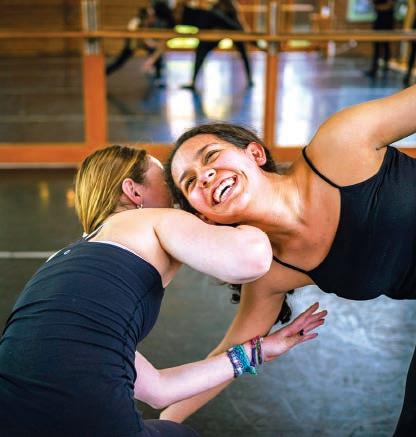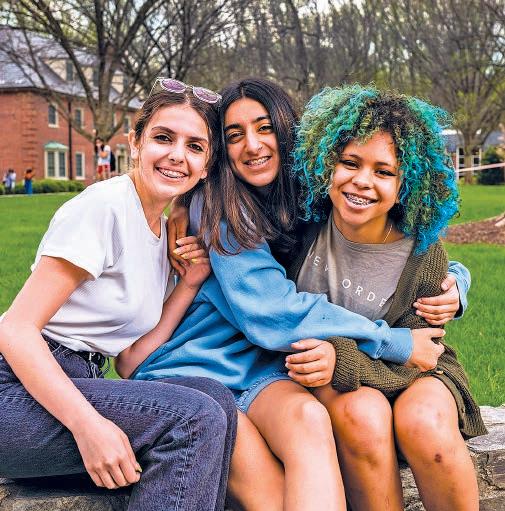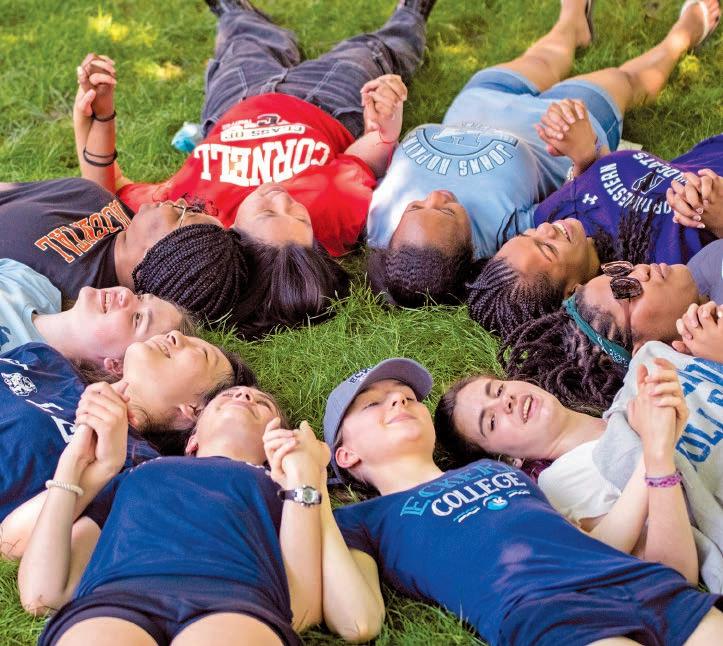
2 minute read
Building community
MADEIRA DEVELOPS INTELLIGENT, EMPOWERED, RESPECTFUL, SELFCONFIDENT WOMEN. Prospective Parent, Kalix Study
Advisory groups cultivate sense of belonging
A foundational element of a student’s development at Madeira is the advisory program. The one-on-one relationships between students and teachers that are so vital to the Madeira education are often formed during advising time. Girls meet with their advisory groups most days, and the groups provide a time for camaraderie, discussion, relaxation, and reflection.
Student Life curriculum promotes community building & self-discovery

Our Student Life program is one of the first steps all 9th graders take when transitioning to life on campus.
The Student Life course focuses on knowledge and skills Madeira students will need as community members and into their future. The course is an opportunity for our newest students to better understand themselves and their community. The curriculum is designed around Madeira’s community values and engages students in examining who they are as individuals, how they influence and are influenced by others, and how they can care for themselves, while cultivating healthy and inclusive communities.
This inquiry- and project-based course is taught by Madeira educators from various departments, giving students the opportunity to learn from community members not typically found in the classroom and benefit from their unique, professional perspectives.
100+ student groups enhance connections and develop leadership skills

Beyond the formal Student Life curriculum, Madeira helps students forge deep connections, find their voices, and boldly use them. From affinity groups, where students connect with peers and adults with whom they share a common identifier, to clubs, activities, and sports teams, Madeira has more than 100 groups for students to join.
They learn not only to join, but also how to become a leader. Beginning in 9th grade, all students participate in one of their grade’s committees and contribute to an initiative within their class. As they move through the grade levels, they build upon their leadership skills to become club presidents, sports captains, and student government leaders, collaborating with adults to set policies and programming for their peers.
Restorative Practices in action
Restorative practices contribute to a supportive community. A major tool of Restorative Practices is the use of “circles.” Sitting in circles, whether in class, in dorm meetings, or other spaces where groups within the larger community are gathering, helps to create community because it puts everyone at the same level, and everyone can clearly see each other—no one can hide in the circle. Students generally express being uncomfortable initially in circles because they feel vulnerable, but by the end of a circle, they feel more seen, heard, and connected. We also use circles to restore relationships when a fracture has occurred.
Dean of Student Life and Culture
Kelli Perkins shares, “A restorative circle is a facilitated, structured conversation that allows those who have caused a fission and those who have been negatively impacted to fully hear each other’s perspective, the impact the incident had on them, and what needs to happen for things to be made right.”










